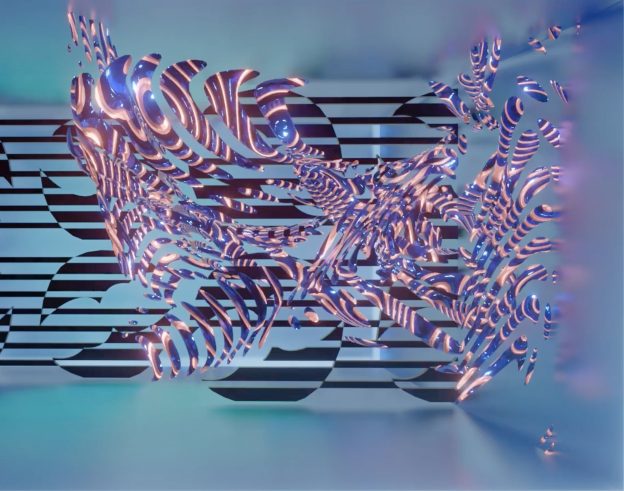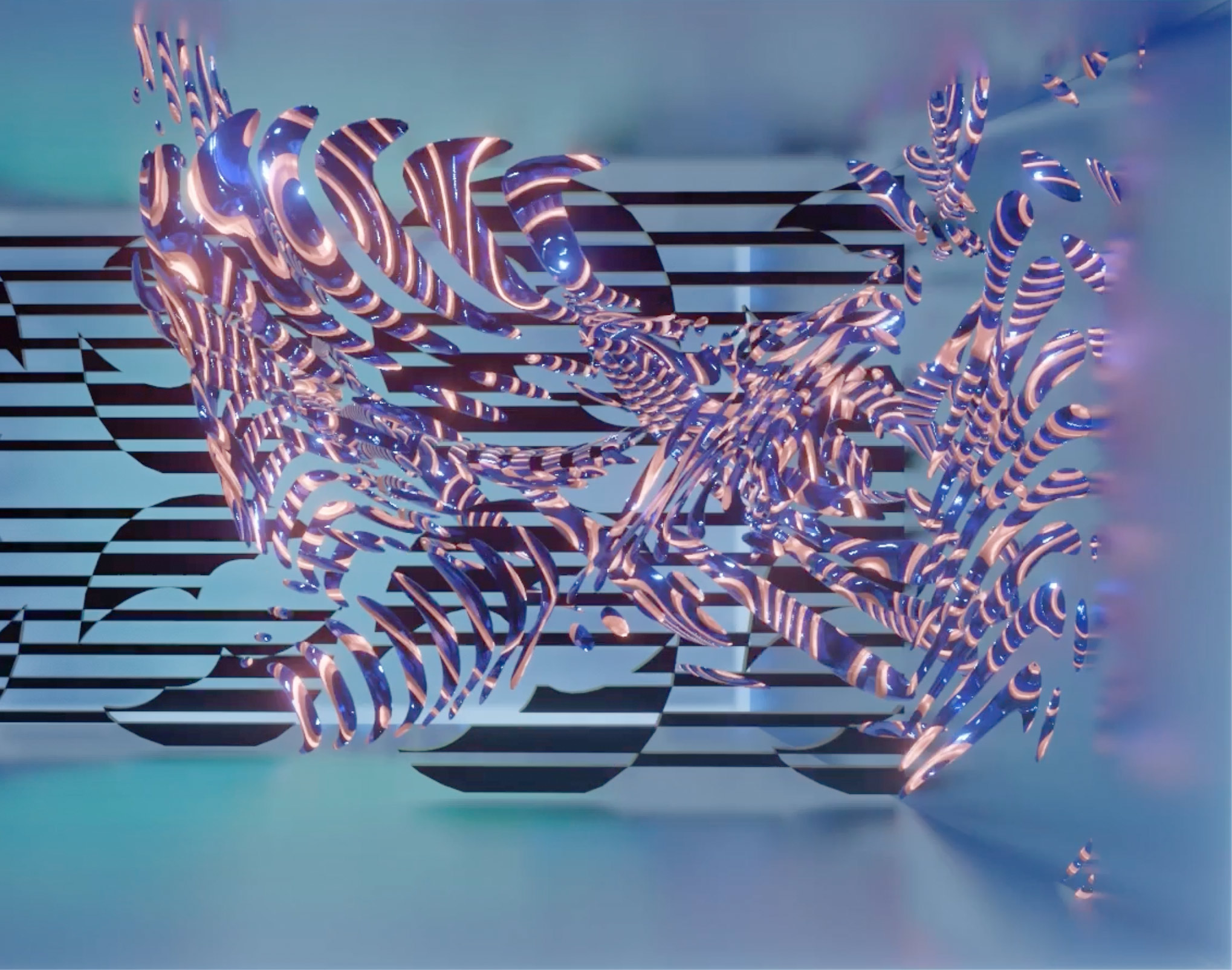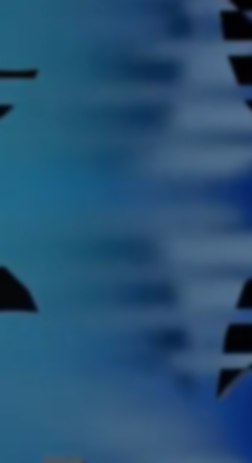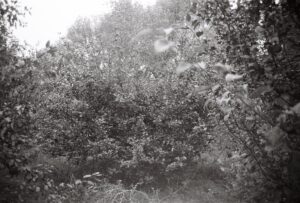
with TIME IS JUST A MEMORY – VI
an artwork by DAGMAR SCHÜRRER
RE: STILLPOINT CLOSING & INVITATION
Hi Anne Marie,
It’s a sad news and I am very sorry to hear about the sudden closing of the magazine.
I would have responded properly to you tomorrow, if it were not for a dumbfounding coincidence: just over an hour before you wrote to me I was possessed by a sudden flash-thought. It happens to me sometimes around the time I’m about to experience something, or hear a piece of news.
In my flash-thought something terrible had happened to you, and in shock, I imagined calling Kate and asking her what happened. Being a flash-thought, I ignored it and pulled myself out of that … thought. The thing is, in my conscious life I think about you, Kate, and the magazine only sometimes, sporadically. That is to say there was no reason, consciously speaking, for my mind to be suddenly abducted into a dramatic thought laden with loss about you/the magazine.
But your email was just that: an “out-of-the-blue” message from beyond, informing me about the fact that a loss is underway. A death.
I was stunned to receive your email in the immediate wake of this otherwise “random flash-thought” I had. I saw it coming, perhaps. Like the settings perk in the smartphone which lets you be warned in advance of an incoming call!
Call it the unconscious, magic, or alignment of the stars, an astrological twist, but it happened: the sad news hit me before you communicated it to me. Moreover, I am not sure I know which “message” you refer to as me having potentially “seen.” Where?
But I saw it in my flash-thought, yes.
I leave you with this somewhat disturbing response, but hey, we’re connected, it’s a sign, I hope.
Tomorrow I’ll address your email without the psychics.
Thanks for bearing with me and sorry to hear about this.
It’s brutal to be suddenly unmoored.
Sokol
ENCHANTMENT OF THE EVERYDAY: REFLECTION ON LOUKAKOS
“Take care!” as we say in goodbyes. It’s a good wish with a hint of caution. It’s also less dramatic, less melancholic, and less abrupt than it could be. It’s not a “farewell,” after all. It’s a continuous wishful thinking, a long-acting spell that will fight off bad luck and unwanted accidents. “Take care” is therefore a blessing of, and for, the everyday. “I’ve been around the world several times,” Chris Marker says in Sans Soleil, through the proxy of a female voice-over, “and now only banality still interests me.”
Over the years, I’ve come to realize that I’ve always been drawn to artistic depictions of everyday activities, or more so, to the amount of care that artists are willing to take in order to tend to them and turn them into extraordinary images. There is a lure to these quiet routines, with the person so lost therein. There’s a mystery to the simple repetitions and the complex emotions they can evoke. I think of a painting by Xiao Jiang I saw at Karma, New York, this November—moody, like a Hopper. In a sun-lit artist studio, stacks of canvases block more than half of the painting. In the far right, a young lady is reading by the floor-to-ceiling window, her face shunned from the viewer, her book pages flash white. I also recall films by Hirokazu Kore-eda. As the story unassumingly unfolds and reveals the dark sides of humanity, like peeling an onion, layer by layer, menacingly, the camera also stops at moments of redeemable pleasure from the everyday life: a pair of hands washing daikon roots; delicate porcelain bowls sitting at the edge of the low table.
Jorgos Loukakos’s video diaries, of which two episodes from the series “Invitation to Love” were published in the first issue of Stillpoint Magazine, FANTASY, resonate with me in similar fashion. The Berlin-based filmmaker uses a MiniDV to record seemingly banal moving images and turns them into mesmerizing sequences: moonrise in a valley; a bus driving through a deserted town; on an earthy, bare flatland, location undisclosed, two tiny figures are seen walking on a red-dirt road that meanders across the picture frame. There is no dialogue, no explicit plot. A droning, premonitory noise dominates the soundscape; and then, a discernible gunshot, a reverberating scream that bleeds into a camera shot of cottages peacefully sitting on the slope of a pine forest. Next, an adult bird is feeding its hungry nestling. As soon as the chick swallows the food, it perks up its posterior and produces a grayish-white fecal sac—as big as its head. The adult bird picks up the sac with its beak. And the scene about the birds ends there. Pure cinematic experience arises from these unexplained sequences of footage. A fantastical eeriness is conjured and dissipating.
Toward the end of Loukakos’s video, I vaguely see a man—probably in his fifties—wearing glasses, a white shirt, and a tie, eating something on a fast-moving train. I could only see the refracted reflection of the man in the window pane, against blurred-out images of the trees and the warehouses that flash in and out of the picture frame. My rewatching of the video was paused by a phone call from a friend.
“Well take care and safe travels!” I said, as they were about to drive out of the city for the holidays.
The first proper snow just arrived in Chicago, and there’s a long road ahead.
– Nicky
THE TALE OF STILLPOINT
I was working for a sales and marketing company when the job announcement with Stillpoint came to me through a series of events. Some things just happen like that, and you’re not specifically searching for anything, you are just quietly being blessed. When a blessing has run its course, I spend a lot of time with the why. Why was I gifted the experience? What does it mean for me to take it forward? At the age of twenty-three, my goal for moving to London was to get an internship with a magazine. But before I had even moved, I had found Stillpoint without looking.
Before this, I hadn’t ever experienced a “non-oppressive” workplace, but I had done a lot of work trying to educate those around me on systematic inequalities. It’s true to say I didn’t even know what a non-oppressive workplace looked like, or if it could even exist in this climate. I was living in the aftermath of Covid-19 where my early twenties had been rendered comatose, while war had broken out between Russia and Ukraine and the UK was seeing some of the most difficult and notable times in history. The word “uncertainty” was something that had pervaded the past few years of my life, which made it precarious to move forward, the burden of history feeling ever-present.
In the midst of this difficulty and darkness, like in all good stories, I found a glimmer of light. I found myself in two communities, Stillpoint being one of them, both of which reaffirmed my faith that non-institutionalized places of learning and working are not fantastical, that they are not something to be made. They are already in existence and are already alive. Stillpoint was a small, non-invasive, charging community working towards something, and a huge part of that was not only in what they were trying to say or do, but especially in how they behaved. This brings me to Anthony Huberman’s essay “Take Care.” He writes:
If an institution goes from knowing to caring, it could point to the affective relationship that ties people to ideas and become a place for attachment rather than consumption.
The way of Stillpoint was like that, it was about carrying the mission through the way that they behaved— as opposed to just declaring to “acknowledge” something, namely, systematic inequalities. The great community of Stillpoint supporters—they supported from a place of unusually intensive care. The working community that sprouted from this initial base of care, a community which carried that care forth, out into the accomplishments of the magazine.
For the past month now, as Stillpoint has seen itself in the “eye of the storm,” I have reflected on what exactly it means to take care, and how we can collectively shift ourselves into a culture of care. I was recently on an art course where we dismantled this phrase “To Care” over a period of three weeks. The conversations that have unraveled from this have shone immense light on the discomfort and unease around care, which demonstrates to me a collective experience of feeling a lack of. My conclusion from these conversations is: the responsibility that we have as individuals to come closer to care itself … to become so close to it that we become it … that care becomes so much a part of who we are that the people around us will become infected by it.
And I can only wish for any reader here to reflect on what it means to care, to reflect on their own output of care in their everyday life and their community.
Amongst societal conflict, neglect, and austerity, I have sought refuge and found clarity in the communities that instill care as a way of being, while I struggled to see care elsewhere. The communities I’ve had the privilege to witness and be a part of resist this lack of care by making care part of their very skeletons. In this context, the past couple of months has been one of intensive learning for me. It is crucial that these kinds of communities are tangible for young people like myself, and through ideologies and methods of care, that they can plant immovable seeds of the same. When experiences like this one ends, one need not worry, as they find new life amongst the people they have infected, life that will be transferred to someone else who may also find that glimmer of light, without looking.
Take Care,
Kymara
X
Huberman, Anthony. “Take Care,” 2011.
SOKOL FERIZI writer
Sokol Ferizi b.1987 in Mitrovicë (Kosovo) is a writer, poet, and translator, living and working in Berlin. His work includes a book of poems, In a World Without Germany We Could Be So Good Together, and contributions to magazines such as Starship, Havenot, The Moth, and 212, as well as zines such as Lirindja, Kushtetuta, and Lamella.
Sokol was featured in Issue 004: APOCALYPSE with his essay “The Death of a Star,” Issue 002: SHADOWS with his short story “Exile,” and Issue 001: FANTASY with his personal essay “A Lover’s Block.”
Sokol was Founding Staff Writer for Stillpoint Magazine.
NICKY NI writer
Nicky Ni is an arts administrator, writer, curator and co-founder of TNL (aka. The Neu Lithium), an online platform for time-based and media arts. When she’s not working, she likes to geek out on coffee, scout around for techno music and fall asleep in video installations. Nicky is a Chinese expat lurking in Chicago.
Nicky was Sustainability Coordinator at Stillpoint Magazine in 2022.
KYMARA AKINPELUMI writer
Kymara Akinpelumi is a proud northerner of the UK who dances between Manchester and London. She is an artist and speaker who works primarily with the photographic medium, using digital media as a tool for social discourse. She is mostly known for her self-portrait series Dichotomy, an educational series which gives insight into her experience of being mixed. She is passionate about rap music, arts education, and travel, and she loves an occasion.
Kymara was Arts Intern for Stillpoint Magazine in 2022.
DAGMAR SCHÜRRER artist
Dagmar Schürrer is an Austrian new media artist based in Berlin, Germany. She holds a degree in Fine Art from Central Saint Martins College of Art and Design in London, UK. In her artistic practice she assembles digitally generated objects and animations, text, and sound to form intricate video sound montages, evocative of painting, collage, or poetry. Ever unfolding in changing variations, they are presented on screen, as installations or combined with new technologies such as augmented reality (AR). Her work has been exhibited internationally, amongst others at the New Contemporaries at the ICA London, the Moscow Biennale for Young Art, the Centre Pompidou Paris, Haus der Kulturen der Welt Berlin, Louvre Auditorium Paris, Transmediale Vorspiel in Berlin and the Museum of Waste in Changsha, China.
As a board member of the Berlin media art association (medienkunstverein), she is committed to supporting new forms of presentation of contemporary new media art.
Dagmar was featured in Issue 005: DAZE with her video works Virtualized and Galaxy.
© Copyright for all texts published in Stillpoint Magazine are held by the authors thereof, and for all visual artworks by the visual artists thereof, effective from the year of publication. Stillpoint Magazine holds copyright to all additional images, branding, design and supplementary texts across stillpointmag.org as well as in additional social media profiles, digital platforms and print materials. All rights reserved.




